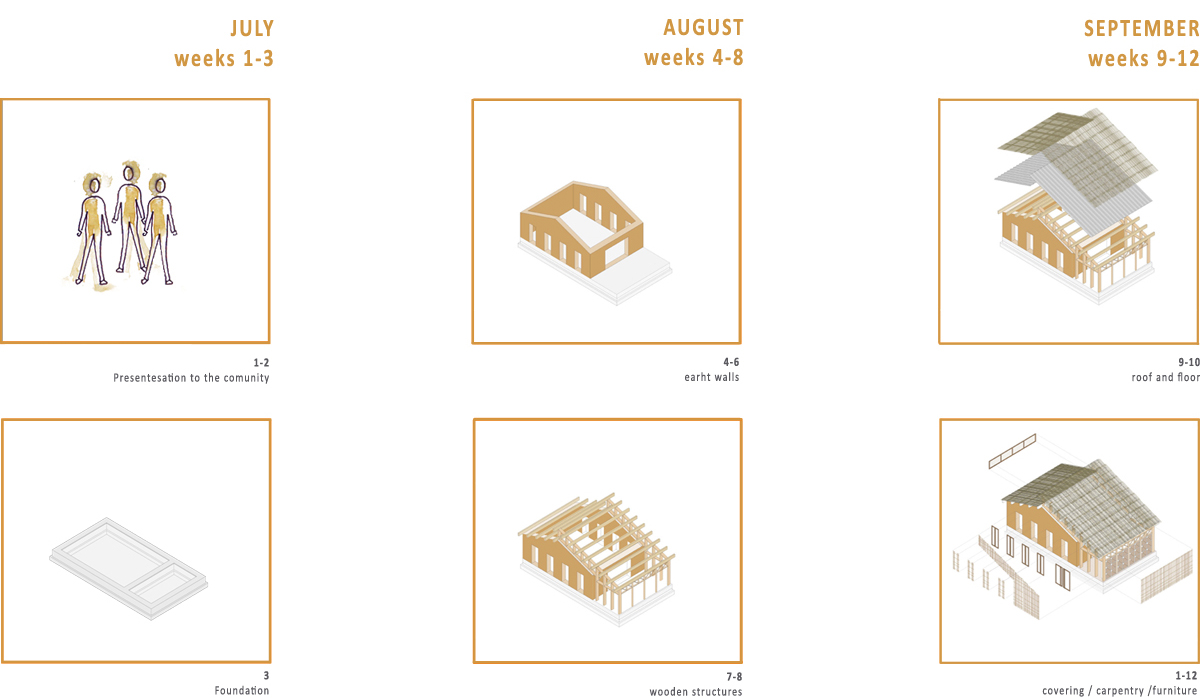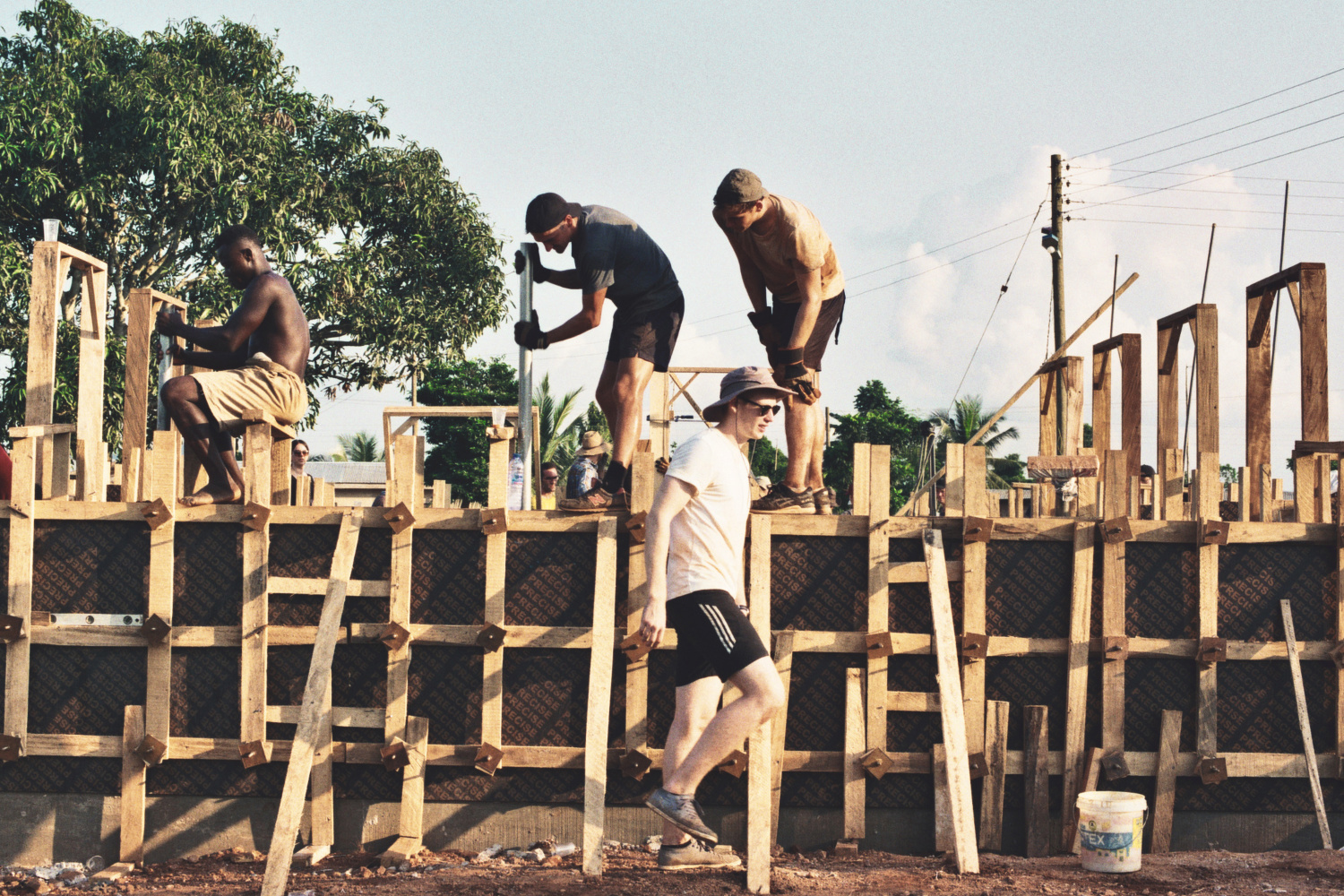Program
The workshop was held from the 8th July to the 30th September 2018. The project had different construction phases divided within those 12 weeks. The work was developed in two locations: the construction site and the carpentry workspace. Every week we organized the schedule and tasks for the following days and divided the participants into different groups in order to cover and meet the weekly goals. There were around 25 participants, staying for periods of time varying from two weeks to three months. Each participant took part in at least one of the phases. The duration of the construction phases varied depending on the weather, availability of materials and execution circumstances.

Collaborative construction
The execution of the project was developed in a participatory way, which is a model that allows for the exchange of knowledge and capacities between all the actors, internationals and locals. The project considered the local reality of the place and the design was adapted to local architecture references and the available resources. Working for and with the community allows not only to exchange and expand the technical knowledge but also to understand the social and cultural situation of the place.
Theoretical and practical knowledge
The workshop was conceived as a place to learn by experimenting and exchanging ideas. Participants worked the mud directly with their hands, building prototypes and testing them at 1:1 scale. Local experts would be there during the process to help to the understanding of mud´s properties and possibilities as a construction material.
Impact on the community
The successful implementation of the project aims at reinforcing the community of Korase in different levels. On the one hand the workshop was expected to foster a sense of ownership and empowerment of the community not only during the length of it but also afterwards. We noticed a real engagement of the community during the whole construction process, which usually is an indicator of how people will take care of a building afterwards. The nana was determined about this when he said that “this is a project for the community, so it is the community to take care of the project”.
Another important aspect was working with mud as a contemporary construction technique. Mud was the main subject of the workshop. Working with it aimed at giving a new value to a material that is largely available and inexpensive, and developing together an example of new ways of implementing a timeless material. The response of the community was genuinely curious and positive.
 Foto © Aulaterra
Foto © Aulaterra
